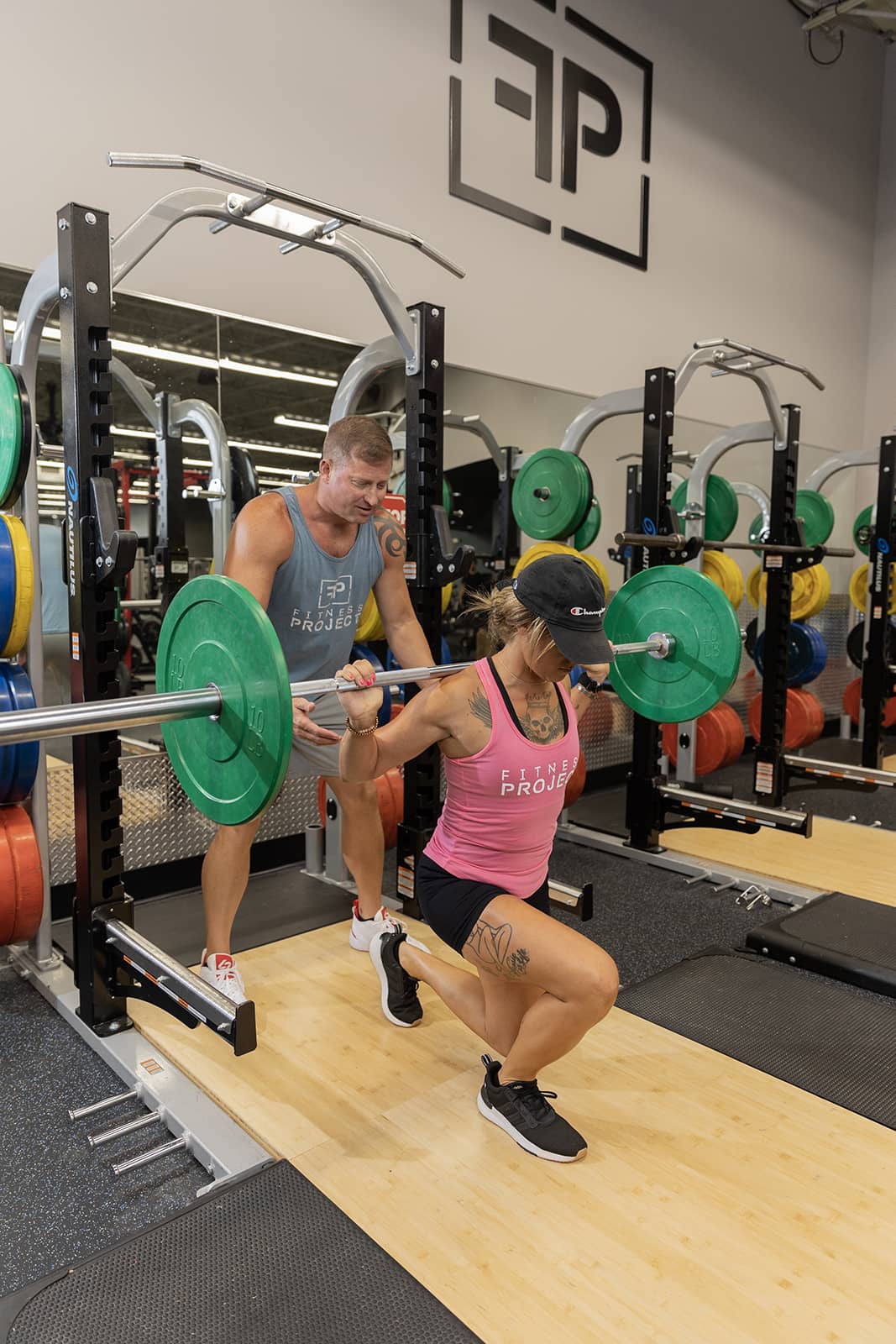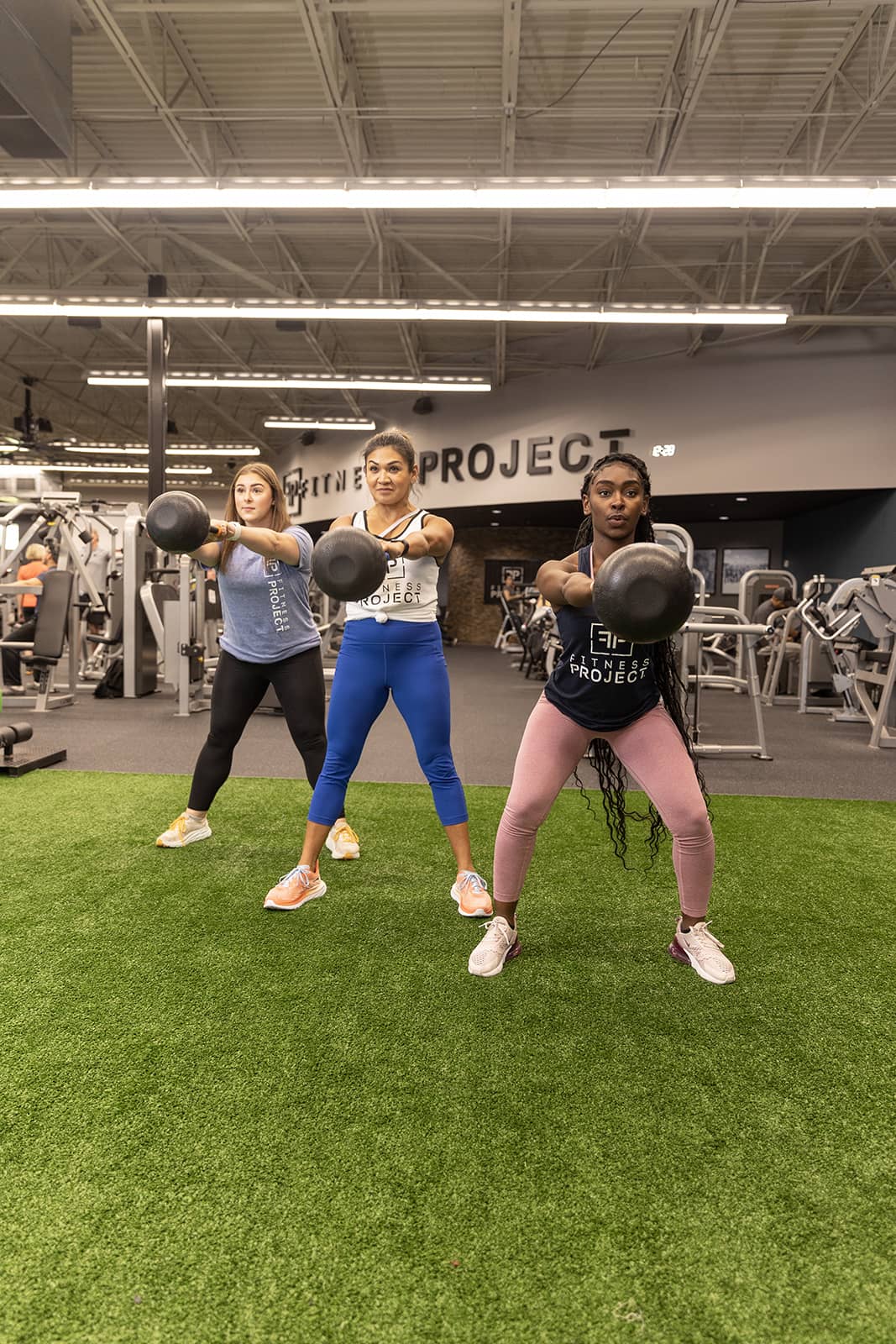Exercising with a partner comes with tons of great advantages, both for physical health and overall well-being. The shared commitment to fitness goals builds a sense of accountability, encouraging you to both stay consistent and push your limits. Working out with a buddy also introduces a bit of friendly competition, motivating each of you to strive for your best performance. Beyond the physical benefits, the social aspect of exercising with a partner enhances the overall experience, making workouts more enjoyable and creating a support system that can significantly contribute to mental and emotional well-being. The synergy between workout partners not only improves the effectiveness of the training session but also builds a sense of camaraderie, turning fitness into a shared journey that strengthens your body and your relationship.
Partner exercises at any level
1. Spot
Take your weight training to the next level. A friend can help ‘spot’ you through those last couple of tough reps at the end of your set. Having someone around when lifting heavy weights also makes your workout safer and keeps you both injury-free. Workout buddies will also help each other perfect their form by pointing out the times their partner needs to straighten their back more or bend their knees a little bit extra.
2. Alternate Equipment
Get your reps in with your little pair circuit! Pick two pieces of equipment focusing on different body parts or muscle groups. Determine the number of reps you both want to do. Then, switch equipment and switch again. By trading machines, you are building in a break for one muscle group while working another, keeping your heart rate up and momentum going.
Beginner Exercises to do with a partner
If you are just starting your fitness journey, having a partner to join you can make a world of difference. Sometimes, trying something new alone can be intimidating, but if you have a buddy, you can be newbies together. Always prioritize proper form and start with a suitable number of repetitions or duration, gradually increasing intensity as fitness levels improve.

1. Partner Lunges
Stand facing each other, hands on hips or holding hands for balance. Step forward with one foot, bending both knees into a lunge position. Ensure the back knee hovers just above the ground. Push back to the starting position and switch legs. Continue alternating legs for a set number of lunges.
2. Back-To-Back Wall Sit
Stand back-to-back with your partner. Both take small steps forward while maintaining back contact. End in a wall-sit position with your buddy acting as the wall. Hold it!
3. Medicine Ball Partner Pass
Sit facing each other with knees bent. Use a medicine ball and pass it back and forth. Engage your core as you twist to pass the ball. Increase the intensity by leaning back slightly. Continue passing the ball for a set number of reps or time.
4. Plank Hand Slap
High-five for planks! Both people get into a plank facing each other. Remember to keep your core and glutes engaged. Reach out and slap your right hand, return to your plank, and then slap your left hand. Challenge yourselves to hold your perfect plank without twisting.
5. Single-Arm Rotation Squats
Stand directly across from your partner (about 2 feet apart), feet shoulder-width distance apart, knees slightly bent. Reach your right arms out long, grab onto each other’s right hands/forearms, and rotate your torso to the left. While holding hands, lower down into a squat position. Stand up, rotating your torso back to the center. Switch hands/arms and go again.
Intermediate exercises to do with a partner
Add some complexity and intensity to your workout routine. These exercises require more coordination, strength, and balance than beginner exercises, helping to challenge your fitness levels further.
1. Double Burpees
 Stand facing each other. Simultaneously, perform a burpee, including a push-up and a jump. As you jump up, give your partner a high-five before descending into the next burpee. Coordinate your movements to maintain a steady pace.
Stand facing each other. Simultaneously, perform a burpee, including a push-up and a jump. As you jump up, give your partner a high-five before descending into the next burpee. Coordinate your movements to maintain a steady pace.
2. Wheelbarrow Plank Walks
Partner A starts in a plank position. Partner B holds Partner A’s ankles, lifting their legs into a wheelbarrow position. Partner A walks forward in a plank while Partner B stabilizes. After a set distance, switch roles and walk back.
3. Resistance Band Partner Rows
Attach a resistance band to a sturdy anchor point. Both partners grab an end of the band and step back to create tension. Simultaneously perform rows, squeezing your shoulder blades together. Maintain a straight posture and control the band’s resistance throughout.
4. Assisted Pistol Squats
Stand facing each other, holding each other’s hands for balance. Lift one leg and perform a pistol squat while your partner assists by providing support. Switch legs and repeat. Focus on control and stability during the movement.
5. Plank with Lateral Hand Tap
Both partners get into a plank position facing each other. Lift your opposite hand to your partner and reach across to tap your partner’s hand. Return to the plank position and alternate sides. Engage your core to stabilize your body during the movement.
Advanced exercises to do with a partner
Ready to level up? These exercises require a high level of coordination, strength, and agility. Ensure that both partners are comfortable with the individual exercises before attempting them together, and always prioritize safety and proper form.
1. Synchronized Kettlebell Swings
 Stand facing each other with a kettlebell between your feet. Simultaneously, swing the kettlebell up to chest height, keeping your movements synchronized. Focus on the hip hinge and explosive power, coordinating your swings for a smooth motion.
Stand facing each other with a kettlebell between your feet. Simultaneously, swing the kettlebell up to chest height, keeping your movements synchronized. Focus on the hip hinge and explosive power, coordinating your swings for a smooth motion.
2. Partner Wheelbarrow Push-Up Jumps
Partner A starts in a plank position. Partner B holds Partner A’s ankles, creating a wheelbarrow position. Partner A performs a push-up, and as they push back up, Partner B jumps over Partner A’s legs. Switch positions and repeat, alternating the push-up and jump.
3. Medicine Ball Russian Twists
Sit next to each other, with one partner holding a medicine ball. Lift your legs off the ground and lean back, balancing on your sit bones. Simultaneously twist towards one another and side and pass the medicine ball to your partner. Continue twisting and passing the ball, engaging your core throughout.
4. Partner Pistol Squats with Medicine Ball Pass
Stand facing each other with partner A holding a medicine ball. Partner A lifts one leg and performs a pistol squat while passing the medicine ball to Partner B. As Partner A stands back up, Partner B performs a pistol squat on the opposite leg and passes Partner A the ball. Continue alternating legs and passing the medicine ball.
5. Tandem Wall Sits with Medicine Ball Throws
Both partners perform a wall sit, back to back, with knees bent at a 90-degree angle. Hold a medicine ball and rotate your torso to one side, passing the ball to your partner. Your partner catches the ball and rotates to pass it back. Continue the rotation and ball pass while maintaining the wall sit position.
The shared experience of overcoming challenges and celebrating achievements creates a positive and supportive environment, enhancing the overall enjoyment of workouts. The collaborative nature of partner workouts extends beyond the gym, positively impacting mental well-being by reducing stress, enhancing mood, and creating a strong support system. In essence, exercising with a partner not only improves physical fitness but also contributes to a more holistic and fulfilling wellness journey.



